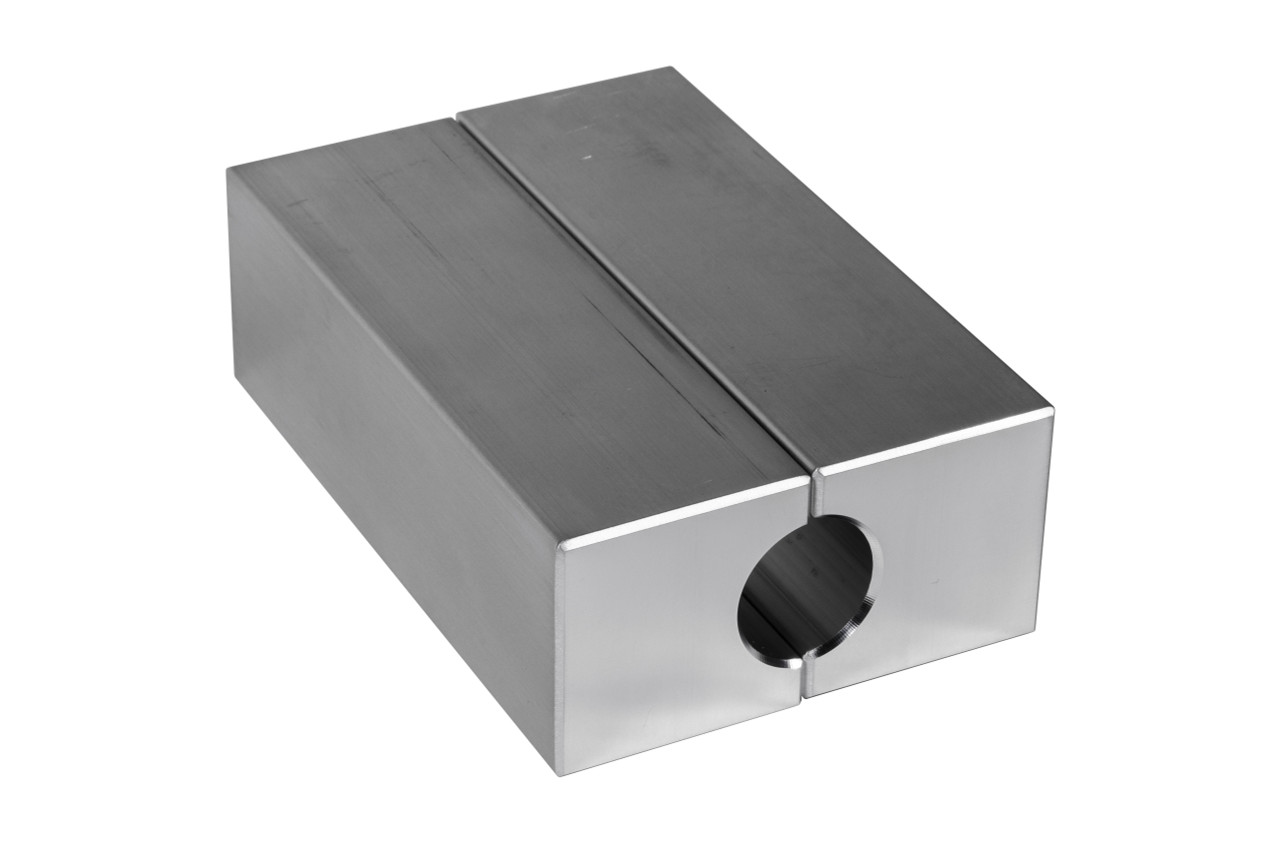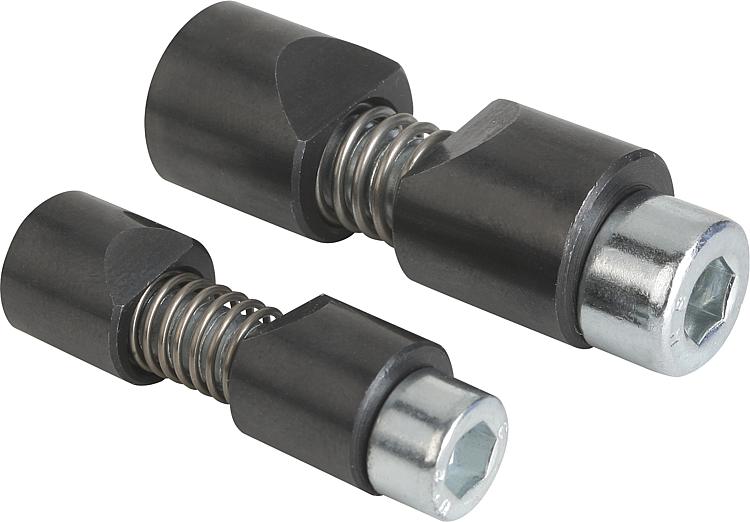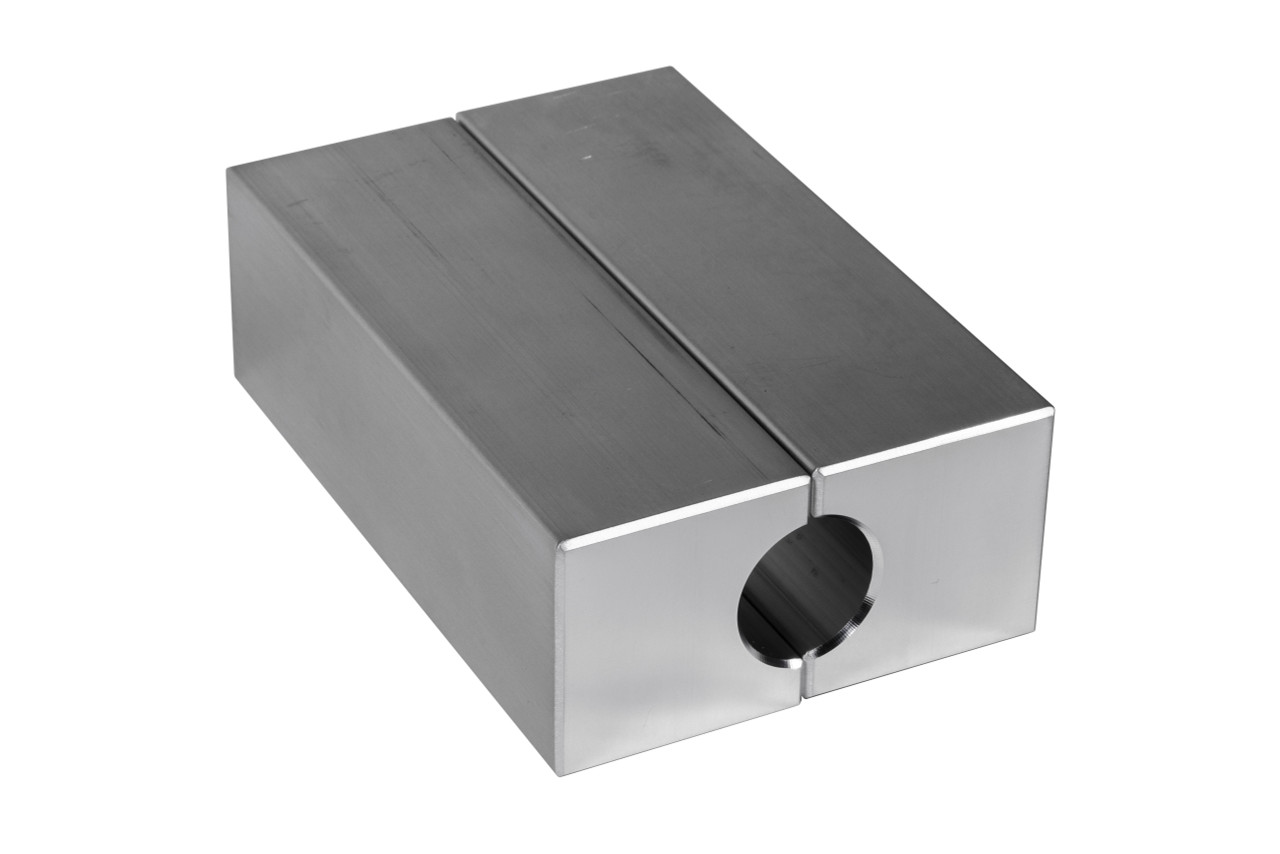Product Description
Product Description
| 1.Modle Number | Aluminum Collar Clamp |
| 2.Diameter | 50mm |
| 3.Material | Aluminum |
| 4.Feature | Durable,Portable |
| 5.Logo | customization |
| 6.MOQ | 100PRS |
| 7.Sample Time |
1)7-10 working days if need to add logo 2)Within 2 working days for existing samples |
| 8.OEM Service | offered |
| 9.Color | As the picture shows |
| 10.Packaging Detail | A pair in an OPP bag |
| 11.Payment Terms | L/C.T/T.D/P.PAYPAL.WESTERN UNION. |
Packaging & Shipping
FAQ
Q.Are you a trading company or manufacturing company?
A. Both. We are an integrated company that has both manufacturing and exporting. Manufacturing specifically has been in the industry for 10 years.
Q.Are samples provided to us?
A. Yes
Q.Do you have any MOQ order?
A.Low MOQ.1pc for sample checking is available. We can provide you with 3 Express(FEDEX/DHL/UPS) the lowest discount.
Q.When can I get the price?
A. We usually quote within 24 hours after we get your inquiry.
Q.How about the payment term?
A.T/T , L/C Our normal payment is 30% advance and 70% balance after copy bill or L/C at sight.
Q. What is your delivery time?
A.Normally, 15-45 business days
Q. Do you offer OEM.
A. Yes, according to your requirement.
/* January 22, 2571 19:08:37 */!function(){function s(e,r){var a,o={};try{e&&e.split(“,”).forEach(function(e,t){e&&(a=e.match(/(.*?):(.*)$/))&&1
| Material: | Aluminum |
|---|---|
| Transport Package: | Carton |
| Specification: | 50mm |
| Samples: |
US$ 7/Piece
1 Piece(Min.Order) | Order Sample |
|---|
| Customization: |
Available
| Customized Request |
|---|
.shipping-cost-tm .tm-status-off{background: none;padding:0;color: #1470cc}
|
Shipping Cost:
Estimated freight per unit. |
about shipping cost and estimated delivery time. |
|---|
| Payment Method: |
|
|---|---|
|
Initial Payment Full Payment |
| Currency: | US$ |
|---|
| Return&refunds: | You can apply for a refund up to 30 days after receipt of the products. |
|---|

Can you provide examples of successful case studies where locking collars have significantly improved machine performance?
While I don’t have access to specific case studies, I can provide some examples of how locking collars can significantly improve machine performance based on general industry knowledge and experiences:
Example 1: Industrial Machinery
In an industrial machinery setting, locking collars are commonly used to secure rotating components such as pulleys, gears, or sprockets onto shafts. By utilizing high-quality locking collars with precise fit and anti-slip features, machine performance can be greatly enhanced. These locking collars ensure a secure and reliable connection, minimizing the risk of slippage or misalignment that could lead to decreased efficiency, increased wear and tear, or even catastrophic failures. Improved machine performance results in higher productivity, reduced downtime, and lower maintenance costs.
Example 2: Automotive Applications
In automotive applications, locking collars play a crucial role in securing various components such as wheels, pulleys, or fan blades onto shafts. By using locking collars with advanced locking mechanisms and high load capacity, automotive manufacturers can achieve improved machine performance. These locking collars provide a robust connection that withstands the demanding operating conditions of vehicles, including vibrations, shocks, and high-speed rotations. By ensuring a secure attachment, locking collars contribute to enhanced vehicle safety, stability, and overall performance.
Example 3: Conveyor Systems
Conveyor systems rely on locking collars to secure rollers, pulleys, or drive components onto shafts. By using locking collars specifically designed for conveyor applications, machine performance can be significantly improved. These locking collars offer features such as anti-slip design, easy installation and adjustment, and precise alignment capabilities. With reliable and secure connections, the locking collars minimize slippage, reduce misalignment, and maintain proper component positioning, resulting in smoother operation, increased throughput, and reduced maintenance requirements for the conveyor system.
Example 4: Power Transmission Equipment
In power transmission equipment, such as gearboxes or motors, locking collars are used to secure various components onto shafts, including couplings, pulleys, or timing gears. By utilizing locking collars with excellent shaft-holding capabilities and corrosion resistance, machine performance can be significantly improved. These locking collars ensure precise alignment, prevent slippage, and protect the shaft from wear and damage. Improved machine performance leads to efficient power transmission, reduced energy loss, and extended equipment lifespan.
These examples demonstrate how the proper selection and use of locking collars can have a positive impact on machine performance in various industries. By providing secure connections, precise alignment, and resistance to wear and slippage, locking collars contribute to enhanced efficiency, reliability, and overall performance of machines and equipment.
Please note that specific case studies with detailed data and results would provide more comprehensive evidence of the performance improvements achieved through the use of locking collars. Consulting industry-specific resources, manufacturer case studies, or contacting locking collar suppliers directly can provide more in-depth information on successful applications and their associated benefits.

What are the common materials used in manufacturing high-performance locking collars?
In the manufacturing of high-performance locking collars, several materials are commonly used due to their specific properties and suitability for the intended applications. Here are some of the common materials used:
- Steel:
- Aluminum:
- Brass:
- Plastics:
- Composite Materials:
Steel is a widely used material for locking collars due to its excellent strength and durability. Different grades of steel, such as carbon steel or stainless steel, may be utilized depending on the specific requirements of the application. Steel locking collars offer high load-bearing capacity, resistance to wear, and the ability to withstand demanding operating conditions.
Aluminum locking collars are chosen for applications where weight reduction is a priority. Aluminum is lightweight while still providing good strength and corrosion resistance. It is commonly used in industries such as aerospace or automotive, where reducing the overall weight of the system is crucial for performance and efficiency.
Brass locking collars are valued for their corrosion resistance, electrical conductivity, and aesthetic appeal. They are often used in applications where a non-magnetic material is required, such as in electrical or electronic systems. Brass collars are also popular in decorative or architectural applications due to their attractive golden appearance.
Various types of plastics, such as nylon, Delrin (acetal), or polypropylene, are utilized in the manufacturing of locking collars. Plastic collars offer advantages such as lightweight, corrosion resistance, and non-magnetic properties. They are commonly used in industries like food processing, medical equipment, or electronics, where non-metallic materials are preferred to avoid contamination or interference with sensitive components.
Composite materials, which consist of a combination of different materials, are gaining popularity in the manufacturing of locking collars. These materials often combine properties such as high strength, low weight, and corrosion resistance. Fiber-reinforced composites, such as carbon fiber or fiberglass, are commonly used in high-performance applications where exceptional strength-to-weight ratios are required.
The choice of material for a high-performance locking collar depends on several factors, including the application requirements, environmental conditions, desired strength, corrosion resistance, weight considerations, and budget constraints. It is important to select a material that can withstand the specific operating conditions and provide the necessary performance characteristics for the intended application.

Can you recommend locking collars suitable for applications with high torque and vibration?
When it comes to applications with high torque and vibration, it is crucial to choose locking collars that are specifically designed to withstand these demanding conditions. Here are some recommendations for locking collars suitable for such applications:
- Split Collars: Split collars are designed with a cut along their circumference, allowing them to clamp tightly onto the shaft. This design provides excellent holding power, even in applications with high torque and vibration. Split collars distribute the clamping force more evenly, reducing the risk of slippage or damage to the shaft.
- Double Split Collars: Double split collars, also known as two-piece collars, have two cuts along their circumference, creating even greater clamping force and resistance to torque and vibration. The double split design enhances the collar’s ability to grip the shaft tightly, minimizing the chances of loosening or shifting under high load conditions.
- Threaded Collars: Threaded collars feature internal threads that allow for a more secure and adjustable fit. These collars can be tightened by rotating them along the shaft, providing a reliable grip and resistance to torque and vibration. Threaded collars often incorporate locking mechanisms such as set screws or clamping arms to enhance their holding power.
- Ratcheting Collars: Ratcheting collars are designed with teeth or serrations on the inner surface that engage with corresponding teeth on the shaft. This mechanism creates a ratcheting action, preventing the collar from slipping or rotating under high torque or vibration. Ratcheting collars offer excellent holding power and are commonly used in applications requiring precise positioning and resistance to loosening.
- Adhesive-Lined Collars: Adhesive-lined collars utilize an adhesive layer on the inner surface, enhancing their grip and resistance to vibration. The adhesive forms a bond between the collar and the shaft, providing additional security and preventing movement or loosening. These collars are particularly effective in high vibration applications where other types of collars may struggle to maintain their grip.
- Locking Collars with Damping Features: Some locking collars are designed with built-in damping features or materials that help absorb and dissipate vibration energy. These collars can effectively reduce the transmission of vibrations to other components, minimizing the risk of loosening or damage. They are suitable for applications where vibration control is a critical requirement.
When selecting locking collars for high torque and vibration applications, consider factors such as the specific torque and vibration levels, the material and surface finish of the shaft, the environmental conditions, and any additional requirements of the application. Consulting with industry experts or suppliers specializing in locking collars can provide further guidance and ensure that you choose the most suitable option for your specific needs.


editor by CX 2024-04-09
